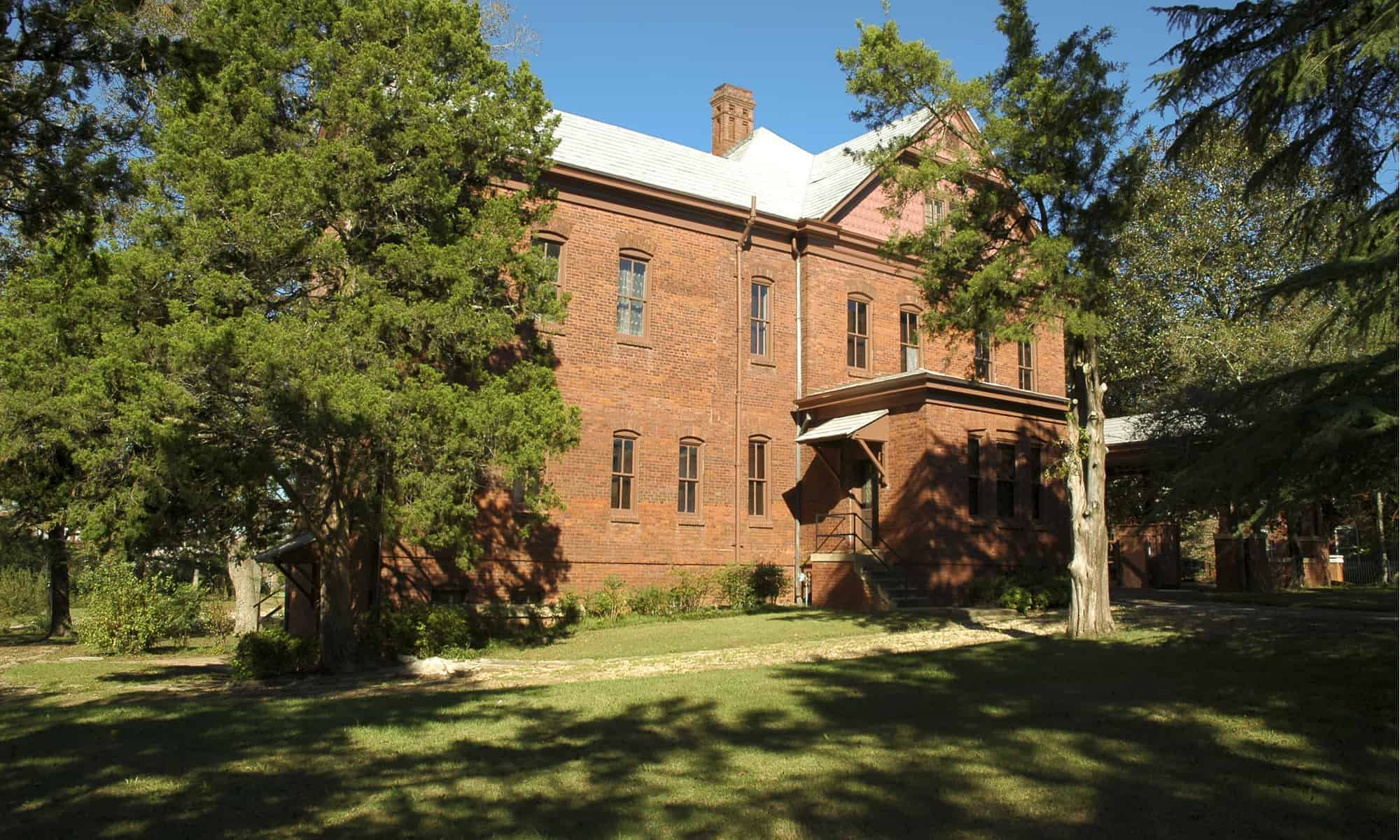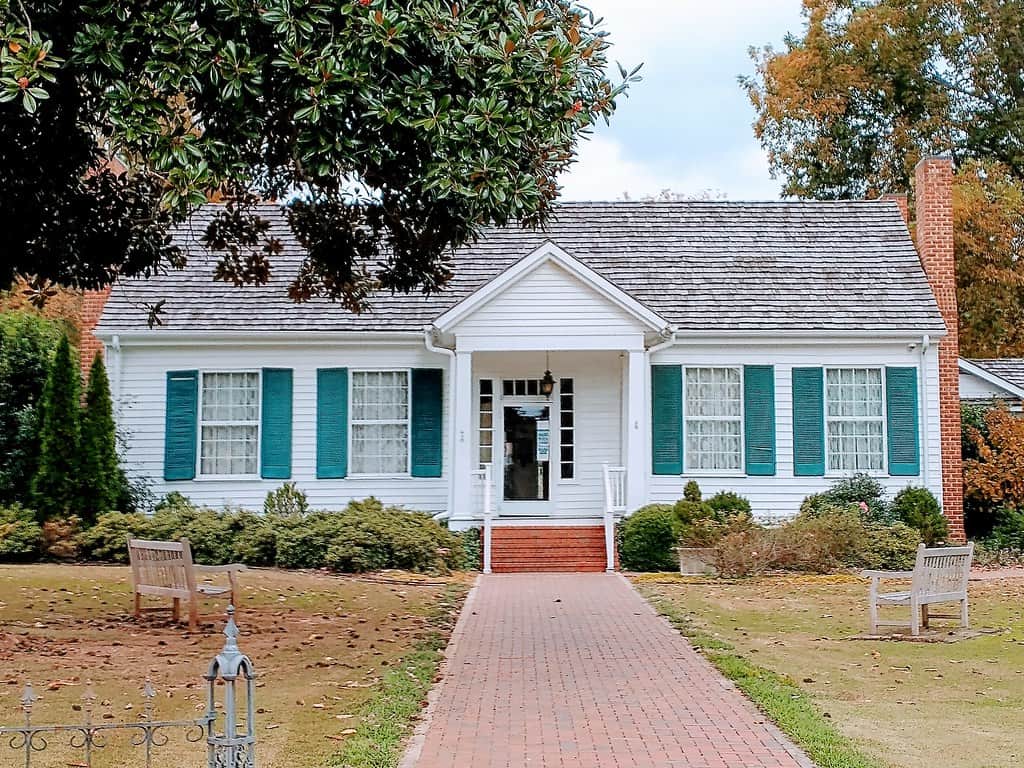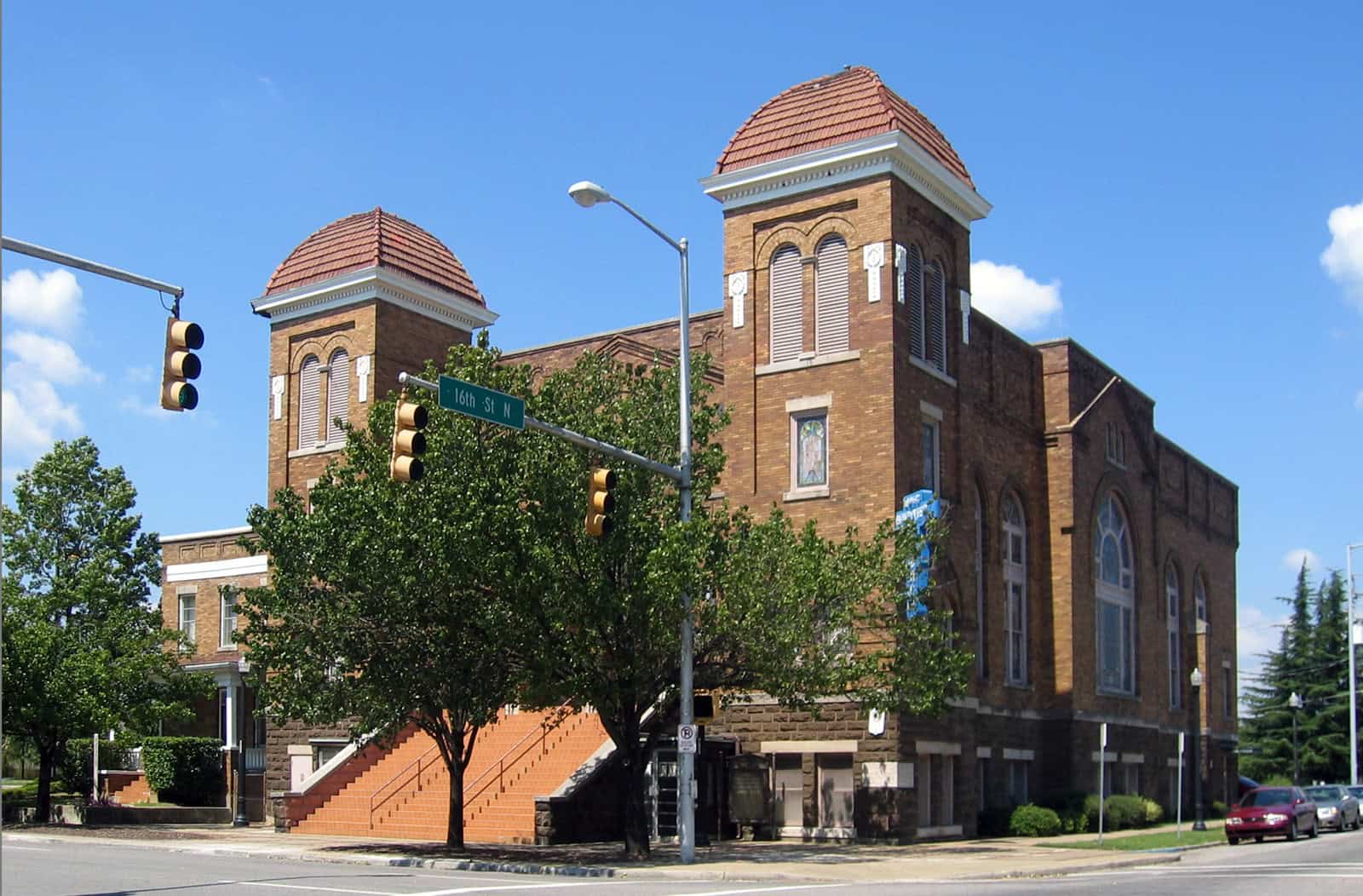There are many reasons to take a trip to Alabama. From the tasty southern cuisine to the adorable small towns, there’s a lot to love. There are also a remarkable number of historical sights to see in Alabama, which gives the state amazing significance. This is a great place to bring your kids because there’s so much to love.
You’ll find that there’s something for everyone here. If you love to learn about famous churches, then head to the Dexter Avenue Baptist Church or 16th Street Baptist Church. Both are significant due to their prominence during the Civil Rights Movement. If you’re a space enthusiast, you’ll find various places to visit that were old testing facilities that helped the world learn more about the universe, including the Propulsion and Structural Test Facility, Redstone Test Stand, and the Natural Buoyancy Space Simulator, among others. Fans of architecture will enjoy the famous Wilson Dam, the incredible Vulcan Statue, and the gorgeous Montgomery Union Station.
You could spend weeks exploring it all. So, to help you plan, we have compiled the 20 best sights that will give you a deeper appreciation of the state.
Wilson Dam

©"Aerial view, Wilson Dam, near Florence, Ala." by Boston Public Library is licensed under BY 2.0. - Original / License
If you love water, technology, and amazing power at work, then one of the historical sights to see in Alabama is the amazing Wilson Dam. The dam was built way back in 1924 and it’s named after former president Woodrow Wilson. This is the largest conventional hydroelectric facility in the entire area, and it’s still used today, and it’s working well. It was designed by the US Army Corps of Engineers, and it was constructed completely out of steel and concrete. Pictures don’t do the dam justice. In real life, you’ll see that it towers an incredible 137 feet and is 4,541 feet long, which is hard to fathom. The dam also includes a lock system that allows boats to go from one side to another. It’s an incredible modern marvel that you just have to see.
Vulcan Statue

©"Another picture of the Statue of Vulcan" by Tepp01 is licensed under BY-SA 4.0. - Original / License
For something truly astonishing, drive by Birmingham, Alabama, and check out the incredible Vulcan Statue. You can’t miss it. This is the largest cast iron statue in the entire world. It’s 56 feet tall and it weighs close to 50 tons. Mythology majors may remember that Vulcan is the ancient god of fire and the forge. Like many other amazing creations in our world, including the Eiffel Tower, this Vulcan Statue was created for one of the World’s Fair celebrations. In this case, Vulcan was built for the 1904 fair. While you visit the statue, you should also check out the local gift shop. Complete the trip by riding the elevator to the top of Vulcan, where you can get an amazing view of the city below.
USS Drum Submarine

©"USS Drum (submarine)" by Teemu008 is licensed under BY-SA 2.0. - Original / License
If you’re a military buff, then one of the historical sights to see in Alabama is the USS Drum Submarine. This sub was launched back in 1941 and it was instrumental during many battles in World War II. This sub is also historic because it’s the first Gato class submarine, which means it was one of 77 subs named after the lead ship, the USS Gato. The sub is 312 feet long, and it was able to hold a crew of 80 people. This is actually the very first submarine that entered the waters in WWII, so it’s incredibly significant. During its tour, it sank 15 enemy ships and earned 12 battle stars. You can see it with your own eyes, and it’s impressive because it’s the oldest American sub in the world.
Tuskegee Institute

©Jeffrey M. Frank/Shutterstock.com
The Tuskegee Institute is one of the most historical education sites in the world. This is a historical black college that was founded by the great African American author, educator, and leader, Booker T. Washington. It was founded way back in 1881. The idea of the school was to provide a place for black students who couldn’t get an education elsewhere to learn and get vocational training. In addition to educating many bright minds, the Tuskegee Institute was responsible for the creation of the Tuskegee Airmen. They were the first black aviators, and they fought and had amazing victories during World War II. Head to the school and you can get a guided tour, watch educational videos, and truly be inspired.
Edmund Pettus Bridge

©Kirkikis/iStock via Getty Images
While you’re driving through Alabama, make it a point to take a route that goes under the famous Edmund Pettus Bridge. This bridge might be short in size, but it’s not short on history. The bridge is one of the first historical landmarks in all of the state, and it received that distinction in 2013. Part of that history is due to the fact that the bridge was home to many famous marches, including The Selma to Montgomery March and Bloody Sunday in 1965. The latter of those events was the launch point for the Voting Rights Act of 1965. The bridge was completed in 1940, and it goes across the Alabama River. Bring your camera to this famous site.
Sloss Furnaces National Historical Landmark

©"Sloss Furnaces, Birmingham AL, North view 20160714 1" by DXR is licensed under BY-SA 4.0. - Original / License
From 1882 to 1971, Sloss Furnaces was the go-to place for all things iron production. The area dates back to the 1800s when James Withers Sloss established it as a blast furnace, but by the 1900s, it became one of the largest iron-making facilities in the nation. The iron produced at this facility was responsible for many bridges and railroads across the state. Though the factory is no longer in operation, it is still very reverent. Today, many public and private festivals and concerts are held here, and if you plan accordingly, you can see one during your stay. The factory now also operates as an interpretive museum. In 1981, Sloss Furnaces received the distinction of being a National Historical Landmark. There’s a lot to see at Sloss Furnaces, so plan your trip accordingly.
Redstone Test Stand

©"Redstone Test Stand with USSRC tour bus" by James E. Scarborough is licensed under BY-SA 3.0. - Original / License
If you love space, rockets, and NASA, then there’s a lot to see in Alabama. One of the spacey locations is the Redstone Test Stand. It’s here that both the Mercury/Redstone and Jupiter-C vehicles were tested for operation. The site was built in 1953, and it was instrumental in getting the first American satellite in space as well as the first American manned spaceflight. At over 100 feet tall and a diameter of 25 feet, it’s a huge and impressive sight. When it comes to rockets, there are other exciting places to visit in Alabama, including the Propulsion and Structural Test Facility, the Saturn V Launch vehicle, the Saturn V Dynamic Test Pad, the Propulsion and Structural Test Facility, and the incredible Natural Buoyancy Space Simulator, among other wonderful sights.
Moundville Archaeological Park

©EWY Media/Shutterstock.com
One of the best sights to see in Alabama if you want to go way back in history is the Moundville Archaeological Park. This area was occupied from 1000 AD to 1450 AD. The residents were Native Americans. Today, this park is considered to be one of the best Archaeological sites in America. You can walk the grounds or go to the world-class museum. While there, you can see many of the artifacts left by the cultures of that time. The landscape is filled with many mounds to explore and 172 acres to travel. One of the most noteworthy mounds is 58 feet tall and spreads across 2.8 acres. Many rituals and ceremonies were conducted on this mound, and you can stand where great men and women stood before.
Montgomery Union Station

©"Union Station Montgomery (AL) March 2019" by Ron Cogswell is licensed under BY 2.0. - Original / License
One of the most stunning sights you’ll see in Alabama is the gorgeous Montgomery Union Station. It was built back in 1898 by the Louisville and Nashville Railroad companies. This was the meeting point of passenger trains from the Gulf, Atlantic Coast Line, Mobile and Ohio Railroad, and more. The station was so influential that it became a National Historical Landmark in 1976. If this station looks more impressive than others you’ve seen then it’s likely because was designed by Frank Pierce Milburn, who is a famous architect who also designed the Alabama State Capital. Don’t just take pictures outside. Go inside, and you can see more amazing architecture, including high ceilings, grand archways, and more.
Montgomery Snagboat

©"U.S. Snagboat Montgomery" by RomeoEchoDelta is licensed under BY-SA 4.0. - Original / License
For a truly historical and unique detour, stop by the Montgomery Snagboat. This is a large tool/boat that was responsible for improving the conditions of the Alabama River. It’s a big vessel that was built back in 1926. As the name suggests, this apparatus was designed to remove snags and obstacles that prevent movement along the river. The tools also ensured that the river was deep enough from beginning to end to allow all boats to travel through it. This is a very unique boat that you won’t see in very many places these days, so it’s worth a visit. While you’re at the Montgomery Snagboat, visit the Boat Museum at the Visitor Center. There’s a lot to learn during your stay.
Ivy Green

©"Ivy Green Helen Keller Birthplace Muscle Shoals Alabama" by amanderson2 is licensed under BY 2.0. - Original / License
This house is known as Ivy Green. While it may seem to be an unassuming house like you’d find in most neighborhoods, this home was the birthplace of a very influential figure: Helen Keller. History buffs will remember that Helen Keller became deaf and blind at an early age. However, she didn’t let that get her down. She was determined to learn. Because of her efforts, she helped many people who were born with similar disabilities to live a better life than they may have lived without her inspiration. She fought for people’s rights, and she gave many speeches over the years to influence others to never give up. Her amazing life started in this house. Visit and take a tour. Come in June, and you can attend the Helen Keller Festival.
Dexter Avenue Baptist Church

©"Montgomery December 2018 44 (Dexter Avenue King Memorial Baptist Church)" by Michael Barera is licensed under BY-SA 4.0. - Original / License
There are many gorgeous and important churches across the state of Alabama. Many of them are places of worship and a beacon of light for the citizens. In addition to that, many of them also have historical significance. In the case of the Dexter Avenue Baptist Church, it was home to human rights advocate and pastor Martin Luther King, Jr, as well as the Montgomery Bus Boycott in 1955. Not only is this place culturally significant, but the church is also quite beautiful. It has huge pointed arches, a magnificent spire, and wonderful stained glass windows. You can go there and pray, or you can take a tour, and you’ll get to see the basement, the sanctuary, and the parsonage. That’s where Dr. King and his family lived while he was the pastor. It’s a great stop you cannot miss.
Alabama State Capital

©Sutherland Boswell/Shutterstock.com
Whenever you visit a new state, you should always make a point to visit the state capital, because that’s where history continues to be made. The Alabama State Capital is no exception. This is the amazing building where the state governor conducts business and passes legislation that’s right for the citizens of the state. In 1960, the capital became a National Historical Landmark, and in 1966, the building made the list of the U.S. National Register of Historic Places. When you visit, you can enjoy spectacular tours of various parts of the building, including the Supreme Court Library, the old Governors Office, the Senate Chamber, the Old House of Representatives, and more. You can take guided or self-guided tours. Best of all, admission is totally free.
16th Street Baptist Church

©"16th Street Baptist Church" by John Morse is licensed under BY 2.5. - Original / License
Definitely add this church to your list of sights to see in Alabama. This is the 16th Street Baptist Church, which was built back in 1873. It is the first black Baptist church in Birmingham, Alabama. Although it’s a gorgeous church with a great history, there were some hard times. Back in 1963, there was a bombing there that was orchestrated by the Ku Klux Klan. It was a sad event that really put a spotlight on the ills of society at that time. The explosion was catastrophic and led to several deaths. Since then, the church has been restored, and it is open to visitors.
Apalachicola Fort Site

©"Fall-Forest" by Chris Sorge is licensed under BY-SA 2.0. - Original / License
For a bit of military history, stop by the Apalachicola Fort Site, which is an archaeological site that covers about 80 acres in Baldwin County. The site was originally discovered back in the 19th century. The fort there was built during the American Revolutionary War for British soldiers who were involved in battles with local Indian tribes. After the war ended, the site was later the home of the Creek Indian tribe. Now, the site includes a cemetery where several soldiers of the time were buried. There’s a lot of history to see here. Plus, it’s within a large forest, so it’s also great for hiking.
Bottle Creek Site

Another wooded area with great significance is the Bottle Creek Site, which is certainly one of the historical sights to see in Alabama. While it’s all trees and plants now, back between AD 1250 and 1550, this land was occupied by the Native American Mississippian culture. Researchers discovered the ancient site recently during the 1930s. Visit in 2024, and you can see many different mounds around the area, the highest of which stands about 45 feet high and covers almost an acre of land. The mounds were built for various reasons, from being burial sights to foundations for the many buildings that once sat here. Head there during your trip and be transported to a land before time.
Brown Chapel A.M.E. Church

©"Brown Chapel A.M.E. Church 410 Martin Luther King St, Selma (AL) March 2019" by Ron Cogswell is licensed under BY 2.0. - Original / License
The Brown Chapel A.M.E. Church has been standing tall since 1908, but it really gained notoriety during the Civil Rights Movement of the 1960s. During that time, this church was the setting of many famous events, including being a meeting place for the Southern Christian Leadership Conference. It was also the meeting place of Dr. Martin Luther King and other famous civil rights leaders while they planned the famous march from Selma to Montgomery that took place in 1965. What you see here was actually rebuilt in 1908. The building was originally constructed in 1903 but was destroyed by fire. The church is gorgeous with its massive and detailed stained windows and tall steeple. Don’t visit Alabama without stopping by.
Episcopal Church of the Nativity

©"Episcopal Church of the Nativity Huntsville March 2013 2" by Chris Pruitt is licensed under BY-SA 3.0. - Original / License
Another one of the amazing sights to see in Alabama is the gorgeous Episcopal Church of the Nativity. This church was founded way back in 1842 and it continues to be an important part of the community over 180 years later. It’s a beautiful building with bold architecture, massive stained glass windows, and an impressive pipe organ. The pipe organ is amazing on its own. It has 2,623 pipes that make incredible music. Most people go to see the windows because they are made with intricate detail. Many of them have scenes taken right out of the Bible that are made purely of glass. You can go to the church and pray or take a tour and behold the beauty of old-school architecture.
Foster Auditorium

©"Malone Hood Plaza University of Alabama Foster Auditorium I" by Deutschlandreform is licensed under BY-SA 3.0. - Original / License
At first glance, this may look like any school building you’d find anywhere around the nation. However, Foster Auditorium is a very important part of American history. It was built back in 1939 and named after the University president at that time. This historical part came in 1963 during the height of the American Civil Rights Movement. It was during this time that then-Governor George Wallace blocked two African American students from enrolling. He stood there, blocking the way when he said his famous phrase, “segregation now, segregation tomorrow, segregation forever.” Luckily, the segregation came to an end. Still, this is an important building to see during your tour of Alabama. There are many lessons you can teach your kids during the visit.
Barber Vintage Motorsports Museum

©"Indian 841 at Barber Vintage Motorsports Museum" by Chuck Schultz is licensed under BY-SA 2.0. - Original / License
For something much different, add the Barber Vintage Motorsports Museum to your list of the historical sights to see in Alabama. This museum, located in Birmingham, AL, is dedicated to bringing you down a historical road of some of the rarest vintage motorcycles. The museum was donated by businessman George Barber due to his love of motorsports. Take a tour through the museum, and you’ll see over 1,500 different motorcycles and a large collection of bicycles, race cars, and other incredible memorabilia. All in all, the museum is a whopping 144,000 square feet, so you can get lost for hours. Plus, there’s also a golf course and a race track, so you can see many of the vehicles in action. You can explore the museum on your own or take a guided tour.
The image featured at the top of this post is ©Sutherland Boswell/Shutterstock.com.